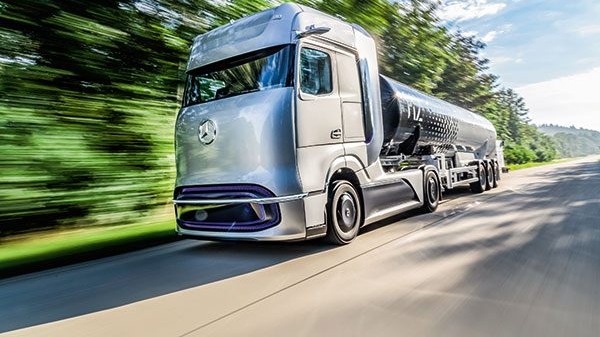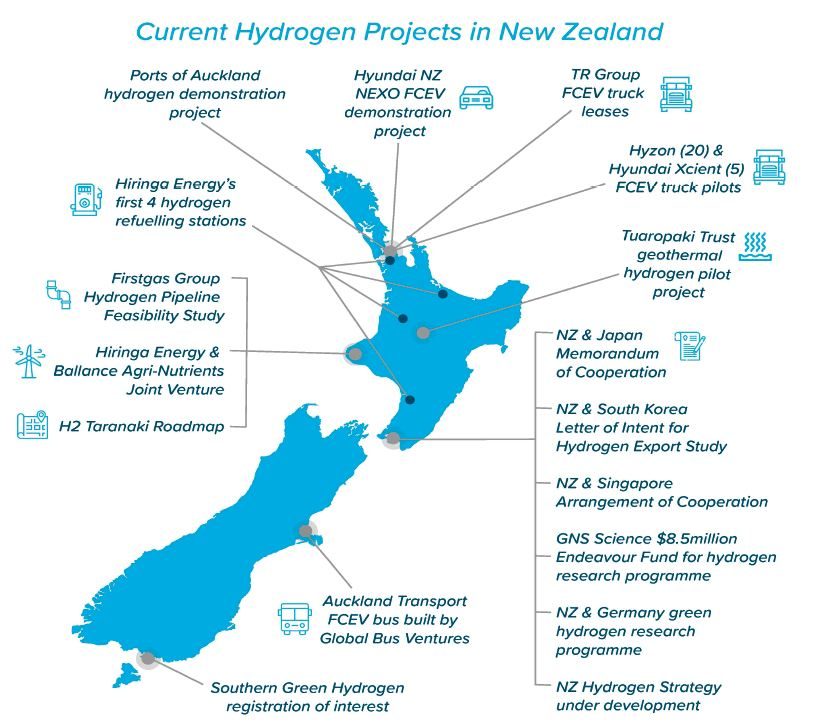Will NZ Keep up on Hydrogen?

The hydrogen economy is advancing globally. Will New Zealand keep up? The final of a three-part series by Hiringa Energy.
The recent IPCC (United Nations) AR6 report has highlighted the need to reduce emissions right now. As it stands, the world is on track for a 2.9°C warming above pre-industrial levels.
Green hydrogen is going to play an increasing role in lowering global emissions moving forward. Europe is saying hydrogen is an intrinsic part of its future integrated energy system. The United States Department of Energy has set a goal of slashing the cost of clean hydrogen by 80% within a decade, and Japan and South Korea are actively creating ‘hydrogen economies’.
Global hydrogen momentum
By the beginning of 2021, more than 30 countries had released hydrogen roadmaps. The industry has announced hundreds of hydrogen projects and ambitious investment plans, and governments worldwide have committed more than US$70 billion in public funding. This momentum exists along the entire value chain and is accelerating cost reductions for hydrogen production, transmission, distribution, retail, and end applications.
Aussie hydrogen investment
Australia is investing significantly in hydrogen as a way to export solar and wind resources to Asia as the country transitions from coal exports, and decarbonises its own economy.
There have been numerous large investments recently announced such as: the Australian Government and ARENA allocating AU$403 million to advance hydrogen projects, state-level funding of AU$400 million to support hydrogen and other lowcarbon technologies, and Queensland has released a AU$2 billion Renewable Energy and Hydrogen Jobs fund.
Hydrogen trucking announcements
Illustrating the ambition within the European trucking sector, a coalition of six vehicle manufacturers, 19 technology providers, 17 infrastructure providers, and more signed a statement in March that targets 100,000 FCEV trucks and 1500 hydrogen refuelling stations by 2030. While nonbinding, this clearly shows a common acceptance that hydrogen fuel cells will play an essential role in reducing emissions within the trucking industry.
Using green hydrogen to decarbonise heavy trucks and HPMVs is a no-brainer where uptime and payload are critical, and fleets are large (with high energy requirements). But hydrogen fuel cells also make sense for buses, trains and ferries with larger duty cycles, with plenty of international (and some domestic) applications already in motion. Hydrogen technology is also advancing quickly in the aviation and stationary/backup power sectors.

Green hydrogen in New Zealand
We have parts of the economy that are going to be hard to decarbonise through direct electrification. Heavy transport and heavy industry are two of those sectors. Green hydrogen technology is advancing rapidly, and prices are showing signs of coming down as the scale of production ramps up. The pieces of the puzzle are coming together to get the energy from our hydro, wind and solar resources into our hard-to-electrify sectors by using green hydrogen and ultimately reach our net-zero target by 2050.
The image above demonstrates how green hydrogen can decarbonise various hard-to-electrify parts of our economy over the next decade as the technology matures and costs come down.
As demonstrated on the adjacent map, many New Zealand organisations have taken early leadership and rolled out hydrogen projects, ranging from vehicle pilots to pipeline testing to export opportunities.
Green hydrogen and the grid
New Zealand faces a challenge in bringing on more renewables to displace fossil fuel-based electricity because wind and solar generation (and a lesser extent hydro) are intermittent by nature. The impact of this was experienced dramatically when rolling blackouts were instigated in the North Island on 9 August when demand outstripped available supply, and the intermittency of our renewables was one of the contributing factors.
As a country, we’re now musing over the causes of the failure and what can be done to fix the problems. In Europe, Australia and New Zealand, we are exploring the potential for green hydrogen to support a significantly larger renewables build than would usually be developed to meet the domestic electricity market. Under this development scenario, hydrogen is produced when there is more sun, wind or hydro energy than we can consume, and by the same token, turns hydrogen production off when the power is required to supply homes, businesses and industry. In this way, green hydrogen can also function as a form of renewable energy storage, which can hold energy for weeks, months and even years, potentially contributing materially to addressing our ‘dry year’ problem.
The Firstgas Group Hydrogen Pipeline Feasibility Study released earlier this year explores scenarios where hydrogen could be blended with natural gas within the gas network from 2030 or earlier in its pure form within geological formations, enabling large scale storage of green energy for when we need it. Government agencies have large-scale green hydrogen storage on the table when considering the $4 billion Lake Onslow pumped hydro project, with the outcome of their feasibility studies expected mid-2022.

 Fuel-cell electric vehicles from Kenworth (above) and Hyzon. Will New Zealand keep up with global trends in hydrogen use?
Fuel-cell electric vehicles from Kenworth (above) and Hyzon. Will New Zealand keep up with global trends in hydrogen use?
Southern green hydrogen project
Meridian and Contact recently announced joint investigations into what opportunities the closure of Tiwai Point might bring. The proposal assumes that the Tiwai Point aluminium smelter closes in 2025, freeing up renewable electricity to be used to produce green hydrogen, primarily for export. A benefit of having the large energy ‘gentailers’ is that it will help mature the green hydrogen conversation and encourage the government to make the regulatory changes required for New Zealand’s green hydrogen market to flourish.
An important decarbonisation tool
Green hydrogen will play a key role in helping New Zealand decarbonise its hardto- electrify sectors, such as heavy transport and industry, through:
• Being a key component of the renewable diesel (R100) production process, the type of biofuel that will bring the greatest emission reductions to our legacy truck fleet.
• Decarbonising our new fleet through hydrogen-electric fuel cell trucks.
• Decarbonising hardto- electrify industrial processes, such as fertiliser, steel and cement production, which currently emit significant quantities of fossil carbon.
Suppose stakeholders in our relatively small market continue to increasingly collaborate. In that case, we can get integrated projects off the ground that can produce low-emission renewable diesel (R100) for our legacy truck fleet and zero-emission green hydrogen for our new fleet, while decarbonising industrial processes such as steel and cement production, resulting in win-win outcomes for all.
The government is currently developing the New Zealand Hydrogen Strategy (the vision was released September 2019). Let’s hope it lays a clear path for industry and policy-makers to traverse together and is enabled by the Resource Management Act reform also underway.
Dion Cowley is the project development and public sector lead at Hiringa Energy.






